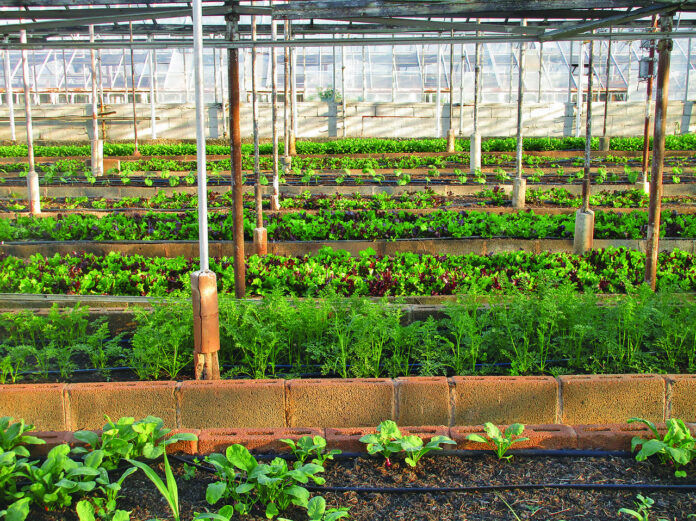In an era where sustainable living and environmental consciousness are becoming increasingly prominent, urban farms are emerging as innovative solutions for greener cities and healthier communities. These agricultural havens within urban landscapes not only bridge the gap between consumers and their food sources but also play a critical role in reducing carbon footprints and enhancing local biodiversity.
Urban Agriculture Explained
Urban agriculture refers to the cultivation, processing, and distribution of food in and around urban areas. This practice encompasses a diverse array of food-growing techniques, including traditional ground-level farming, hydroponics, aquaponics, rooftop gardens, and vertical farming. Urban farms can be found in a variety of settings such as residential gardens, community plots, balconies, and even abandoned lots. They not only provide fresh, locally-grown produce to city dwellers but also encourage community engagement and offer educational opportunities about food systems and sustainability.
The rise of urban farming is reflective of a broader shift towards self-sufficiency and eco-conscious living within cities. As more people recognize the importance of knowing where their food comes from, urban farms are becoming integral to the fabric of urban life, providing access to fresh produce that would otherwise be unavailable or unaffordable. They serve as a tool for empowerment, allowing individuals and communities to take control of their food sources, while also contributing to the greening of urban environments and improving the overall aesthetic of cityscapes.
Urban agriculture has the potential to reshape food economies by promoting local food systems that are resilient and adaptive to changing urban dynamics. It fosters closer connections between producers and consumers, creating a more transparent and trustworthy food supply chain. By bringing food production closer to where people live, urban agriculture can also be a catalyst for social change, promoting healthier diets, reducing food waste, and addressing food deserts in underserved communities.
Reducing Food Miles with City Farms
Food miles refer to the distance food travels from the point of production to the consumer’s plate. The greater the distance, the higher the carbon emissions associated with transport, which contributes to global warming and climate change. Urban farms offer a solution to this issue by drastically reducing food miles. By growing produce within the city limits, these farms eliminate the need for long-distance transportation, leading to a significant reduction in greenhouse gas emissions.
Furthermore, the localization of food production through urban farms has the added benefit of fresher produce for consumers. Shorter supply chains mean that fruits and vegetables can be harvested at their peak ripeness, enhancing both the nutritional value and flavor. This local approach to agriculture also supports the local economy by creating jobs and keeping money within the community. It encourages sustainable consumption patterns and fosters a greater appreciation for seasonal eating, which is more in tune with the natural cycles of the environment.
The environmental impact of reduced food miles goes beyond just lowering emissions. It also lessens the need for extensive packaging and preservation methods required for long-haul transportation. This reduction in packaging waste further contributes to the environmental benefits of urban farms. By simplifying the journey from farm to fork, urban agriculture promotes a cleaner, more sustainable food system that is responsive to the ecological needs of our planet.
Urban Farms: Allies of Biodiversity
Urban farms are more than just food producers; they are critical sanctuaries for urban wildlife and biodiversity. In cities where natural habitats are often scarce, these green spaces provide a refuge for a variety of species, from birds and bees to beneficial insects and small mammals. The presence of diverse plant life in urban farms offers food and shelter, creating mini-ecosystems that can support and enhance local biodiversity.
Additionally, urban farms often employ organic and regenerative farming practices that avoid the use of harmful pesticides and fertilizers. These sustainable methods not only protect the soil and water quality but also promote a more diverse array of organisms. By fostering an environment where natural predators and pollinators can thrive, urban farms contribute to the ecological balance within urban areas, which is essential for maintaining healthy ecosystems.
The educational aspect of urban farms cannot be overstated when it comes to biodiversity. They serve as living classrooms where people of all ages can learn about the importance of preserving diverse species and the roles they play in our food systems. Through workshops, tours, and hands-on experiences, urban farms raise awareness about the interdependence of humans and nature, encouraging more environmentally responsible behaviors and policies within urban communities.
Urban farms are at the forefront of transforming urban environments into sustainable, self-sufficient, and ecologically vibrant communities. By explaining the concept of urban agriculture, highlighting the significant reduction in food miles, and underscoring their role as allies of biodiversity, we shed light on the multifaceted benefits these green spaces provide. As cities continue to grow and evolve, the integration of urban farms offers a promising path toward a more sustainable future, with communities that are deeply connected to the natural world and committed to preserving it for generations to come.
